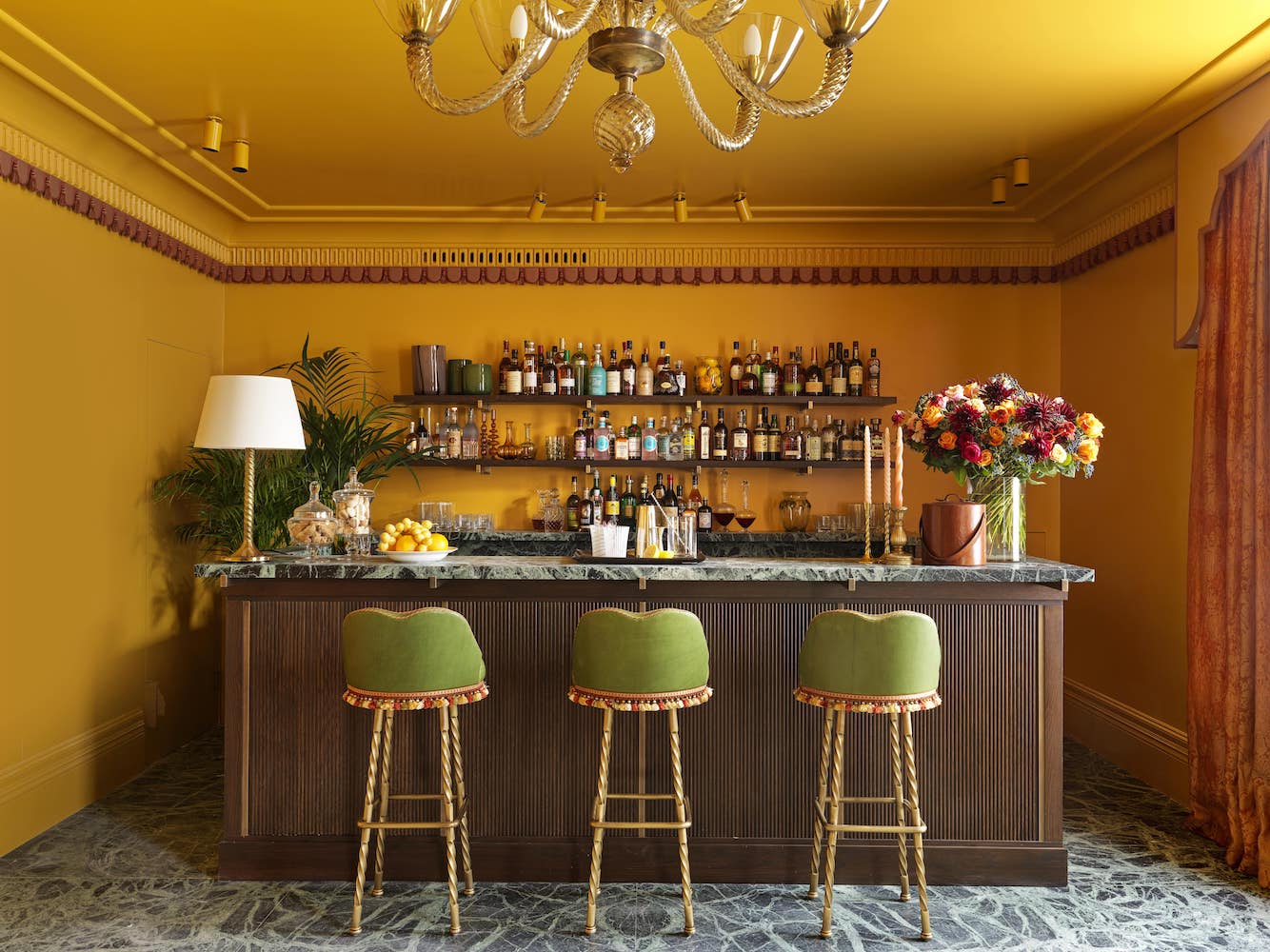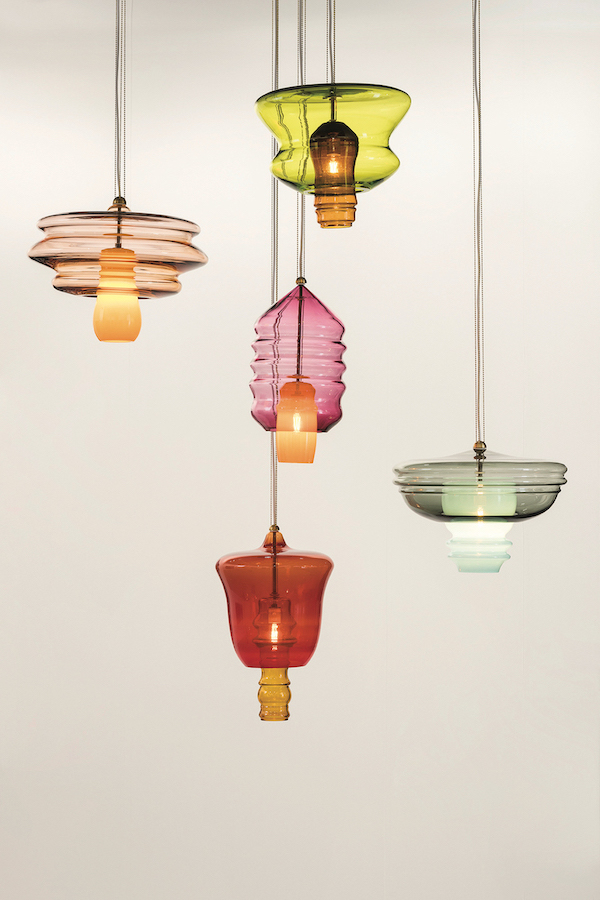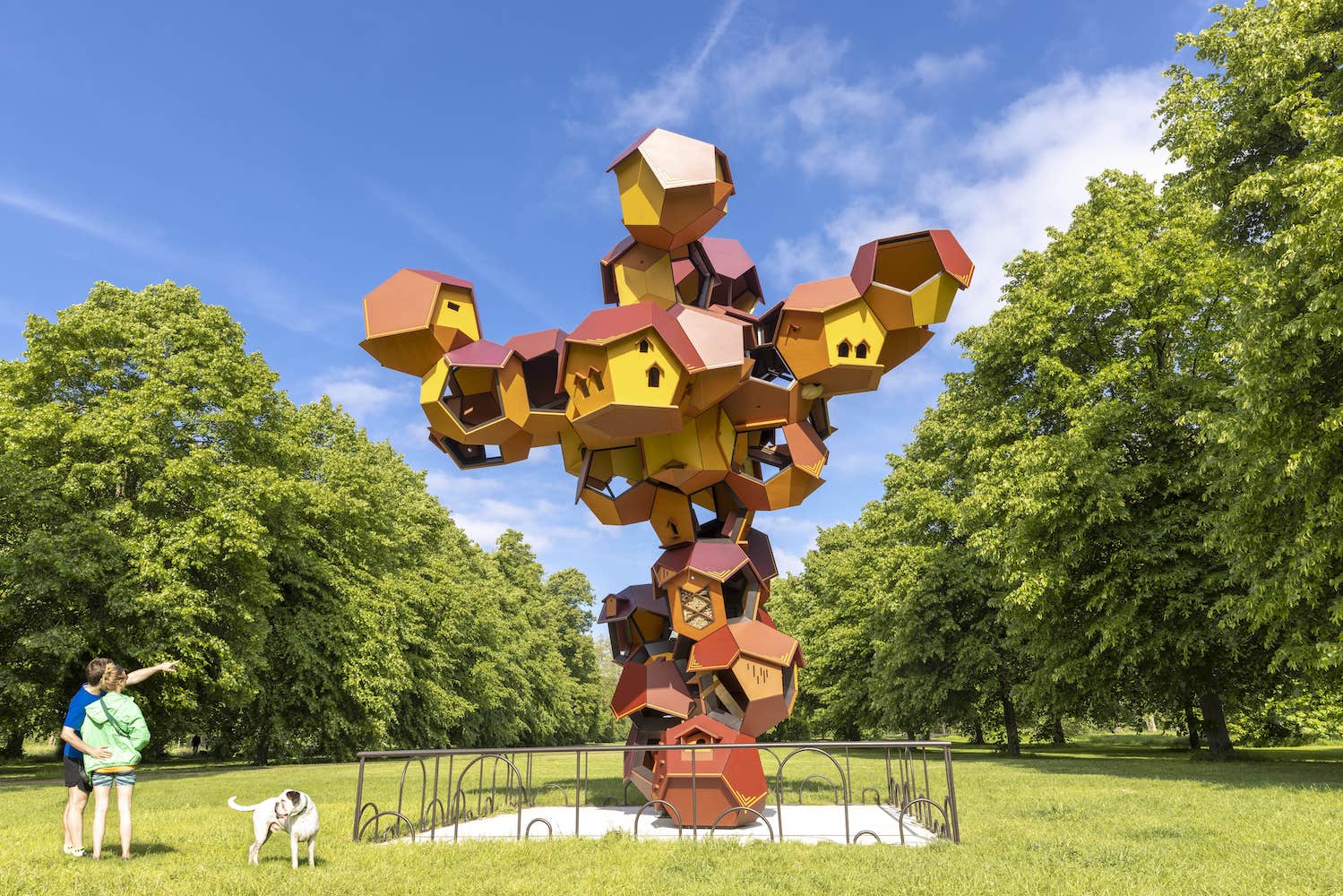How Luis Laplace is Intermingling Art, Architecture, and Hospitality
The Argentine architect and designer Luis Laplace is the co-founder and head of design at Laplace. As an art connoisseur and storyteller with a passion for reimagining space, he bridges the gap between how a space looks and how it feels. Laplace’s relationship with the creative industries began when he was fresh out of school as a recent graduate from the Universidad de Belgrano. First, he worked in Argentina and then moved to New York, where he helped create well-known modern design projects with art-related elements for Selldorf Architects. In 2004, he co-founded a design studio alongside his partner in work and life, Christophe Comoy, to continue his passion. Since then, he has cultivated a bold yet timeless design aesthetic that activates the senses, filling spaces and people’s minds with works of art that swirl with expressive elements.
Today, many spaces Laplace influences feature hand-selected or commissioned works by artists. His collaborative projects with the company ArtFarm, for instance, span scale, meaning, and concept in bars and restaurants, and even a centuries-old farmhouse turned into a countryside hotel. That is the knack of both Laplace and ArtFarm’s founders, Iwan and Manuela Wirth, behind the international gallery Hauser & Wirth. They founded the hospitality enterprise in 2014 to combine art, culture, food, family, community, and sustainability, and have collaborated with Laplace ever since. By sharing these interests, new spaces on the horizon, blurring the boundaries between architecture and art.
Whitewall spoke with Laplace to hear how he worked on ArtFarm projects like The Audley, Roth Bar & Grill, and Durslade Farmhouse at Hauser & Wirth Somerset to consider preservation.
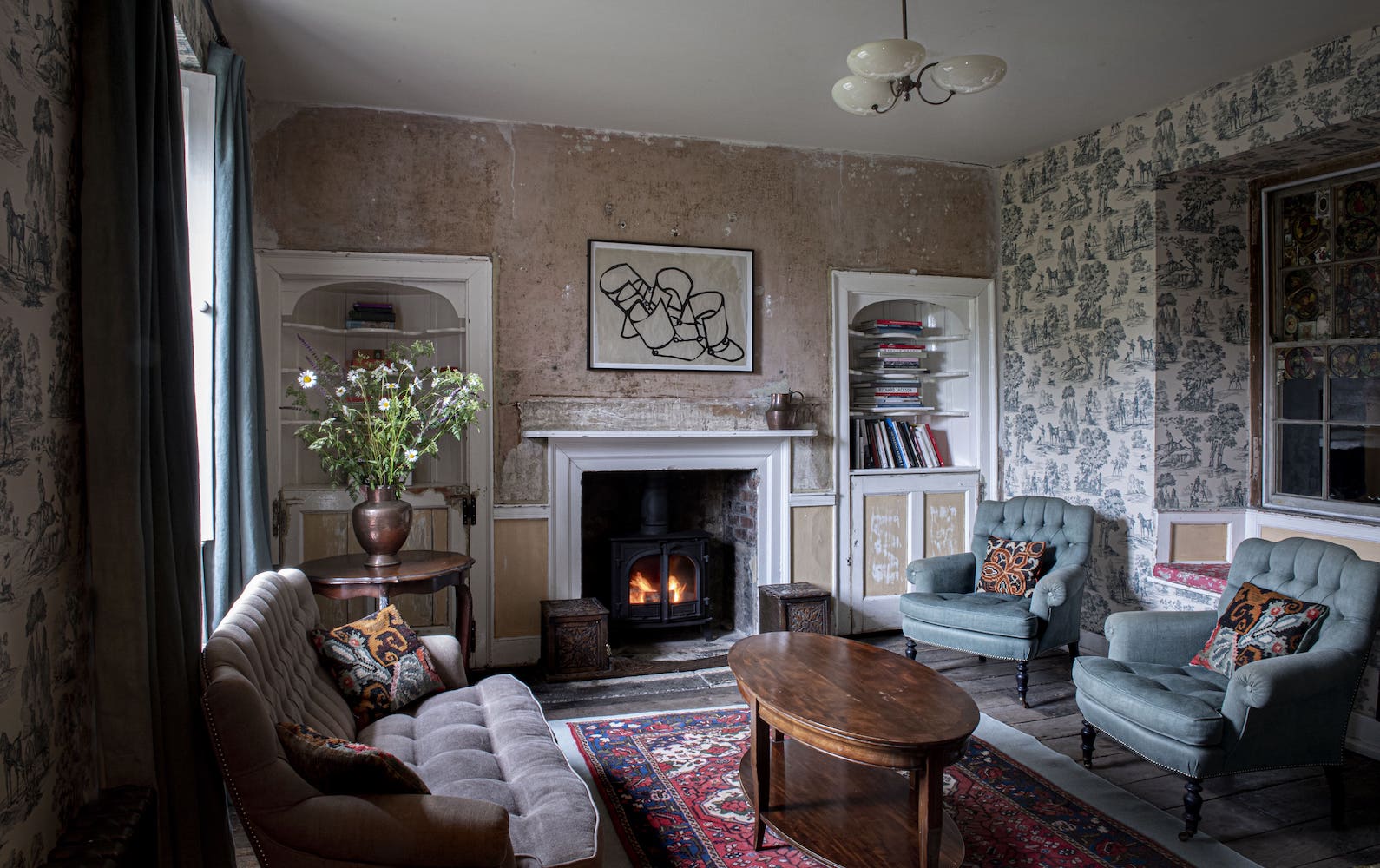
Durslade Farmhouse, courtesy of Artfarm.
Luis Laplace Collaborates with ArtFarm
WHITEWALL: You’ve been working with Iwan and Manuela Wirth for many years and have said that collaborating with them is easy, because you all understand the importance of art to a space. What does your work bring to ArtFarm’s table?
LUIS LAPLACE: I’ve been working with them for a long time—from the beginning when ArtFarm was born. At first, we’d do things here and there, and they’d consult me. I help them develop ideas, thinking about which artist is right for which space. They know my relationship of working with artists, so it’s very easy to communicate. We work on projects, sometimes specific, or think about potential artists to be in a space to translate some types of artworks into architecture, and which ones to collect.
For me, it’s very easy to talk the artist’s language and understand how they work, and how their work can be appliable to architecture and a site, to make them think outside of their box. Sometimes artists are very comfortable working within certain mediums, so I also suggest changing the medium or type of work to do something different.
WW: The Audley in London—a five-floor space that hosts a pub, a private residence, dining rooms, and game rooms—features art in all corners, from Cindy Sherman and Rashid Johnson to Lucien Freud and Subodh Gupta. What is the most surprising work here?
LL: In the restaurant in London, there’s one tiny room, the Audley turret, that I worked on with Anj Smith. Her work is very small, and she’s very detailed. Her paintings are small, detailed, and time-consuming. I asked her to do something for a bigger space, the crown of the tower of the building. It was a bit of a challenge for both of us to think how her work could translate into this space. Even architecturally, the space was challenging. She spent some time working inside of this building, on a scaffolding, painting this piece. It was such a good surprise and challenge for both of us.
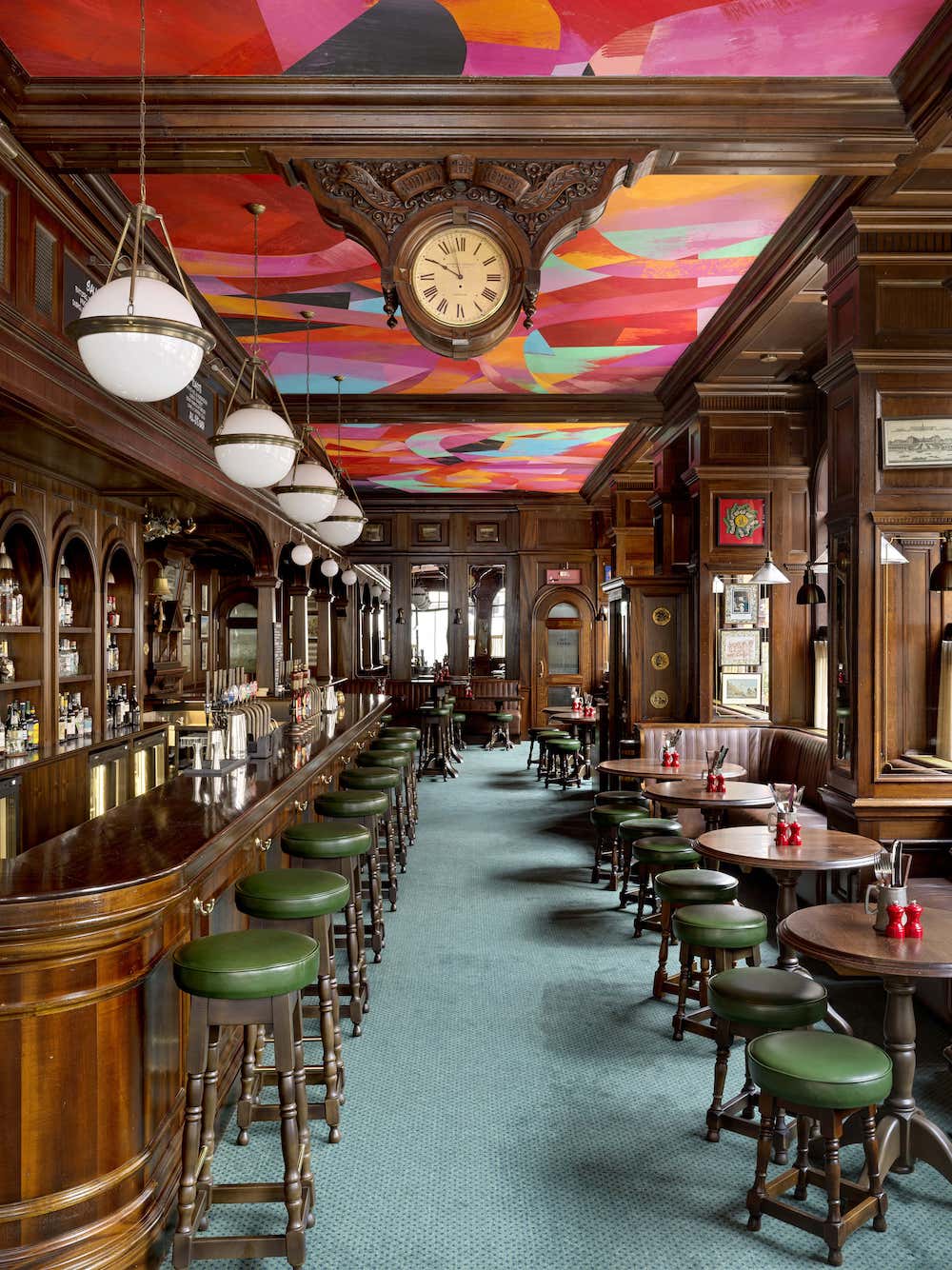
The Audley Public House, photo by Simon Brown, courtesy of ArtFarm.
Laplace’s ArtFarm Project Enlists Contemporary Artist Phyllida Barlow
WW: What about that gorgeous ceiling mural in the pub downstairs, The Audley Public House?
LL: In the pub, I worked with the British artist Phyllida Barlow, which was another great experience. She’s very architectural. I’ve always been fascinated by her sketches of sculptures she did with color, and paintings. You don’t know if it’s a drawing or a painting; she’s expressing and avoiding something with this exercise in sculptures. I always think of her as a sculptor that also makes paintings. So then, how does that translate to a flat ceiling in a room? When you enter the room, she lifts you up. It takes you by surprise. That’s the last thing you’re expecting to see in a pub in London. It brings humor and a smile. Today, one of the challenges that museums have is how to bring a broader audience in. For me, this, in a way, is a different approach, bringing art out of the conventional place and into a place like a pub. Many years ago, I think this would have been unacceptable to have such an artist in a pub like this. Today, it’s almost obvious that the art needs to merge with the communities, to get more people interested. It creates curiosity, and it’s surprising to see how the work engages people in different ways.
WW: Durslade Farmhouse at Hauser & Wirth Somerset seems quite different—an old house in the country that was restored and filled with both contemporary and antique art, furniture, and design objects. What was the starting point?
LL: When we started restoring it, we wanted to do a nice Somerset English country house. We had all these elements to make it look like the right thing in the right environment. I was working with the landscape architect Piet Oudolf, and he was explaining how beautiful the garden was in the fall, when everything is different kinds of brown—how they turn to red and yellow. It wasn’t about death, but the quietness and time when the plants are going to sleep.
When I was walking in the house with Iwan and Manuela during the demolishment, I saw all these layers of paint and wallpaper. You could see so much history in the layering. I thought, “Oh wow, this is Piet’s garden!” Instead of a typical house or hotel, I thought about doing a beautiful house that’s a bit more experimental, letting all these layers come out to let people think about it.
I began by proposing some artists, creating this dialogue between the space, the architecture, and the art. When we finished the conversations with the artists, the boundaries weren’t that clear. They’d ask where architecture ends and art starts. The beauty was that it was all one. The continuity was seamless.
I like to think that even the garden came inside. The idea of stripping the walls and letting the layers and histories come out and be more apparent to our time—that came from Piet’s garden. There’s something subliminal that you don’t read immediately, but it’s there. You feel it.
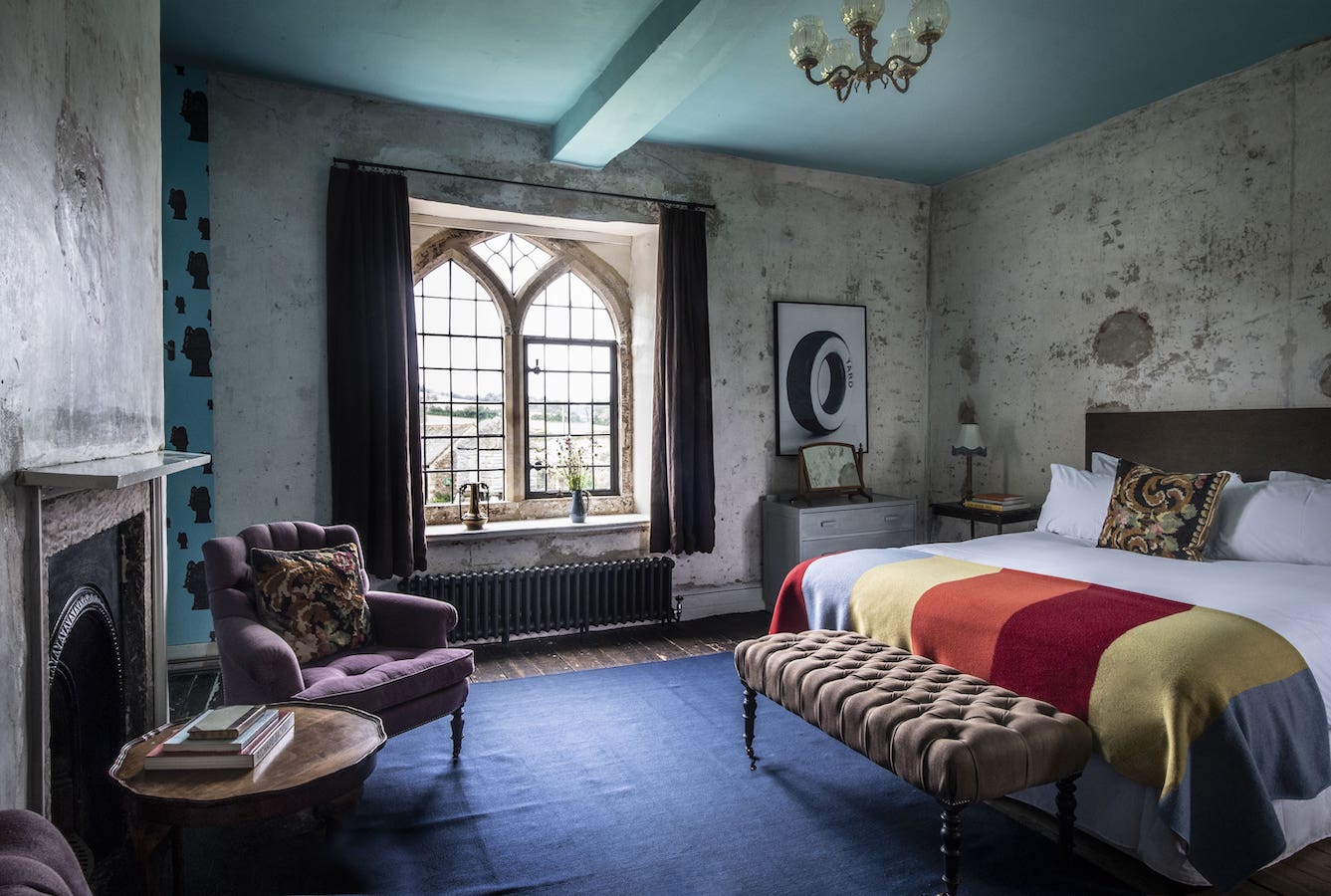
Durslade Farmhouse, courtesy of Artfarm.
Sustainable Construction Comes Naturally in Luis Laplace’s Work
WW: The property dates back to the 18th century, and appears to be an exercise in historic preservation, too, working alongside Benjamin + beauchamp architects. How does restoration play into your larger message about sustainable construction?
LL: My architectural firm has always been very strict about the environment. We have this in our programming, and are very conscious about how architecture has to remain environmentally friendly. We think about shipping, and all these logistics, and experiment with how much we can buy locally.
In terms of restoring this house, we restored the stones and the doors, sure, but most importantly, when the house was first built, it was built with recycled materials. Some of the windows belonged to a church. People before us recycled for economical reasons. We still build a lot from scratch, but when we restore, we don’t demolish things that don’t need to be demolished because it becomes more beautiful. If it works, we believe that it has to stay. I don’t like to impose too many new things.
When we started looking at the doors, for instance, we tried to fix them. When we couldn’t, we replaced them with others recycled from a demolition site—a reclaim center where you could buy things from farms. Part of my romantic idea was that maybe some of the features actually belonged to the same house.
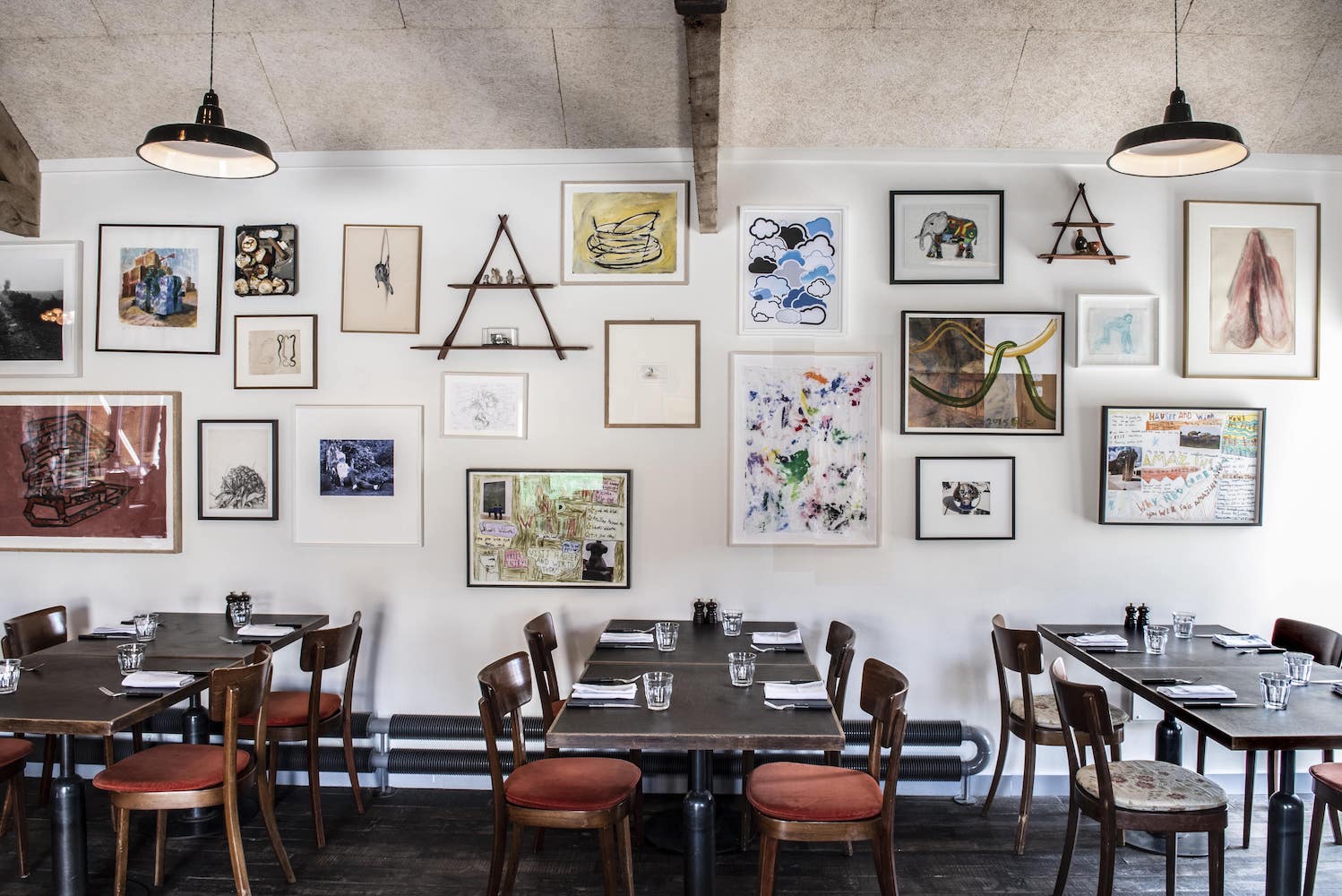
Roth Bar & Grill, courtesy of ArtFarm.



